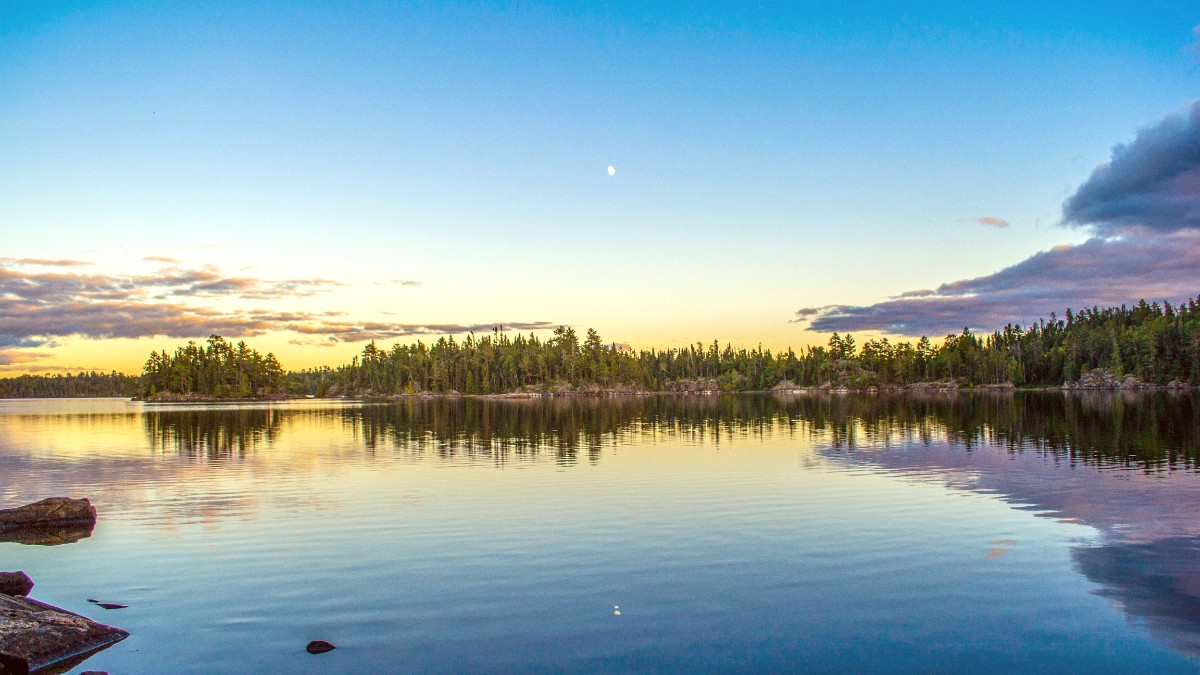
Minnesota, USA
The BWCAW's landmarks are mainly its natural features: expansive lakes, ancient rock formations, and historical portages. These elements tell the story of a landscape shaped by glacial activity over millennia, alongside centuries of human presence.
These sites offer unique insights into geology, ecology, and human history within this protected wilderness area.
These cultural sites provide a understanding of the human and natural history surrounding the Boundary Waters.
When visiting pictograph sites, remember their sacred nature.
Do not touch the paintings. Human oils and contact can damage these ancient artworks.
Do not leave offerings or alter the site in any way. Keep the area pristine and undisturbed.
The best way to observe pictographs is from your canoe, a respectful distance from the cliff face.
Stay on designated routes and respect any posted signage related to cultural sites.
The BWCAW itself is a collection of breathtaking natural attractions, inviting immersion in a pristine ecosystem.
The dominant ecosystem, characterized by coniferous trees (pines, spruces, firs) mixed with deciduous trees (birches, aspens).
Numerous waterfalls and rapids exist along connecting rivers, offering powerful displays of nature's force and beauty, like Curtain Falls and Rebecca Falls.
Dramatic cliffs and exposed bedrock are common, offering stunning visual backdrops and unique photography opportunities.
A haven for wildlife including moose, black bears (observe from distance), timber wolves (howls often heard), bald eagles, and common loons.
Landscape shows clear evidence of glacial sculpting, with U-shaped valleys, roche moutonnées, and erratic boulders.
Thousands of interconnected lakes and rivers form the heart of the BWCAW, offering diverse aquatic environments and crystal-clear waters.
The BWCAW is a certified Dark Sky Sanctuary, one of only a handful globally, offering exceptional night sky viewing due to minimal light pollution.
On clear nights, the Milky Way stretches vividly across the sky, providing an unparalleled natural spectacle for photographers and observers alike.
During periods of high solar activity and clear, dark skies (especially in fall or winter), you might witness the captivating aurora borealis (Northern Lights).
Beyond the well-known routes, the BWCAW holds many hidden gems, offering more solitude and untouched beauty.
While the BWCAW itself offers profound natural beauty, the surrounding Superior National Forest and gateway towns provide additional attractions and perspectives.
These adjacent areas broaden your understanding and appreciation of the unique ecosystem and human history of the region.
Beyond obvious scenic vistas, search for subtle beauty: unique rock formations, specific old-growth trees, reflections, or less common wildlife sightings. Early mornings and late evenings offer the best light.
While the BWCAW core stays consistent, areas on its periphery or in the surrounding Superior National Forest sometimes offer new experiences.
The BWCAW is a haven for observing diverse wildlife. Knowing where and when to look can increase your chances of memorable sightings.
The landscape vividly displays evidence of glacial sculpting and ancient geological processes.
Plan your canoe route to include iconic lakes and portages. Their difficulty varies, offering experiences for all skill levels.
Allocate time for museums and cultural centers in Ely or Grand Marais to deepen your understanding of the region's unique environment and history.
Consult outfitters for recommendations on less-traveled routes or specific spots that promise unique wildlife sightings or solitude.
Paddling the historic voyageur routes immerses you in centuries of exploration and trade.
Discover Historical ToursExperience unparalleled stargazing in a certified Dark Sky Sanctuary, with potential aurora borealis displays.
Find Stargazing ExperiencesObserve moose, eagles, and loons in their natural habitat, making for incredible photography.
Book Wildlife AdventuresExplore the landscape's glacial history through U-shaped valleys and unique rock formations.
Explore Geological SitesCapture stunning vistas and intimate wildlife moments with wide-angle and telephoto lenses.
Find Photography ToursThe museums in Ely offer unique perspectives on the region's most iconic animals.
Ancient Ojibwe rock paintings are found on cliff faces, offering a direct link to the region's past.
Seek out a local outfitter for "hidden gem" advice. They often know of special places or less-used routes that yield unique rewards and solitude.
This local knowledge can transform your experience into something truly memorable.
Access to attractions varies significantly between the wilderness and gateway towns. Safety in the wilderness focuses on preparedness and environmental awareness.
Within the BWCAW, attractions are natural features accessible by canoe and portage. Motorized vehicles are prohibited in most areas.
Safety concerns in the BWCAW relate to environmental hazards rather than crime. Preparedness and awareness are .
Never feed wild animals.
Give animals ample space, especially moose and bears, to avoid conflicts.
The interconnected lakes present opportunities for paddling but also require vigilance for water safety.
Be aware of your group's paddling abilities and choose routes accordingly.
Practicing Leave No Trace principles preserves the pristine nature of the BWCAW for all visitors.
Stay on designated campsites and trails to reduce environmental impact.
The BWCAW, by its primitive nature, presents challenges for accessibility. Wilderness travel mainly uses canoes and portages, which may be difficult for some. Adapted equipment and specialized outfitter services may be an option for some.
Gateway towns offer varying degrees of accessibility. Newer public buildings and accommodations generally meet accessibility standards. It is advisable to contact specific establishments in advance to confirm their provisions.
Museums and visitor centers in gateway towns usually provide accessible facilities. For specific trails or natural sites outside the wilderness, check with the Superior National Forest or state park offices for accessibility information.